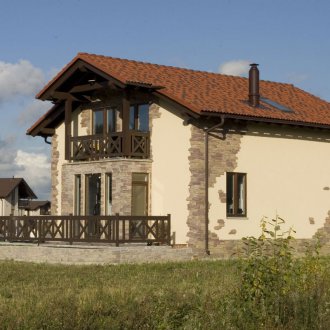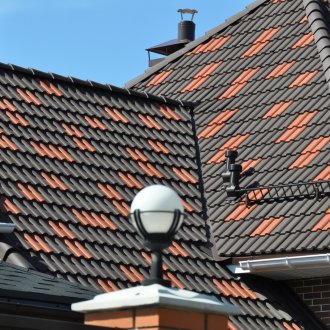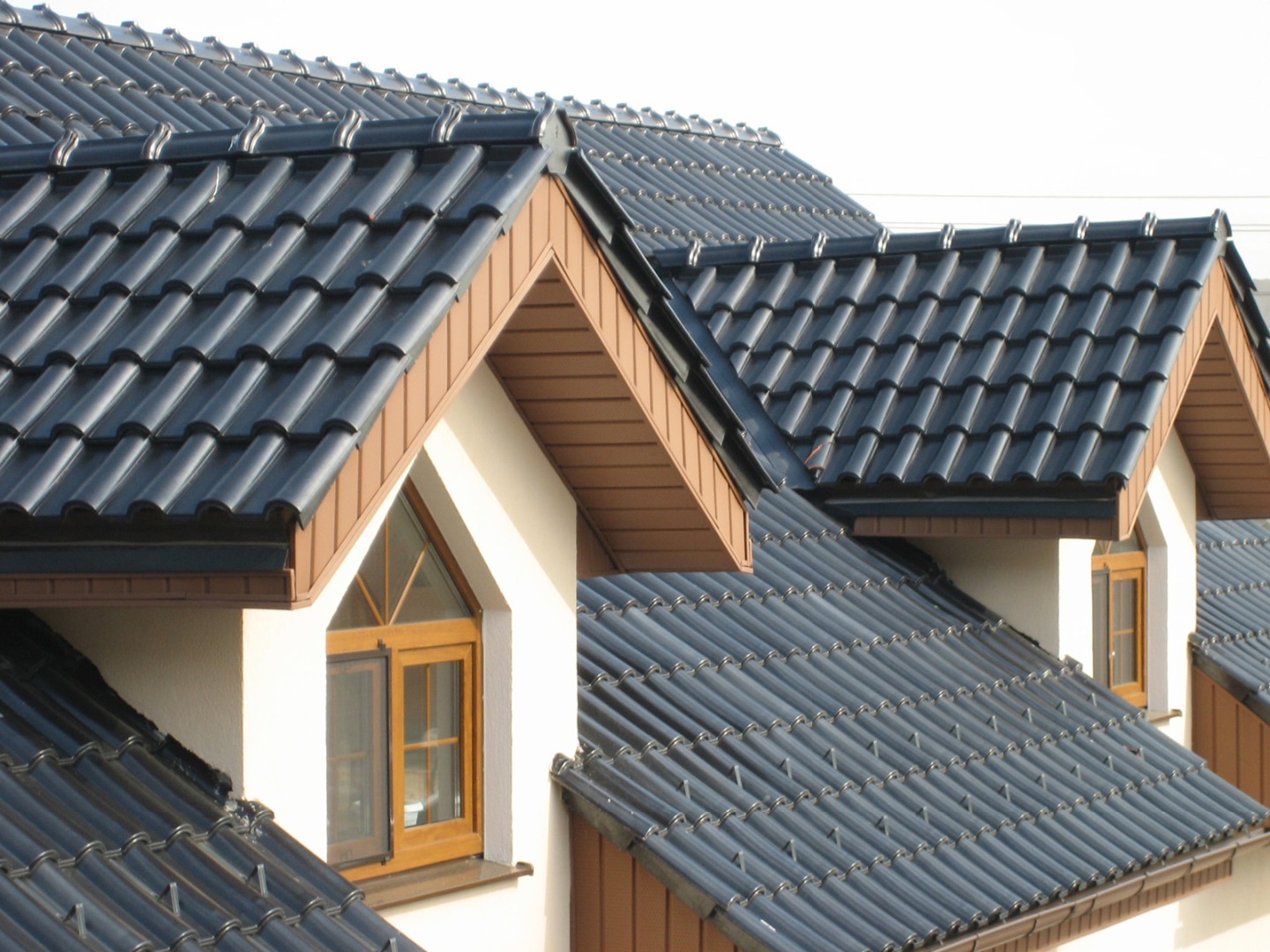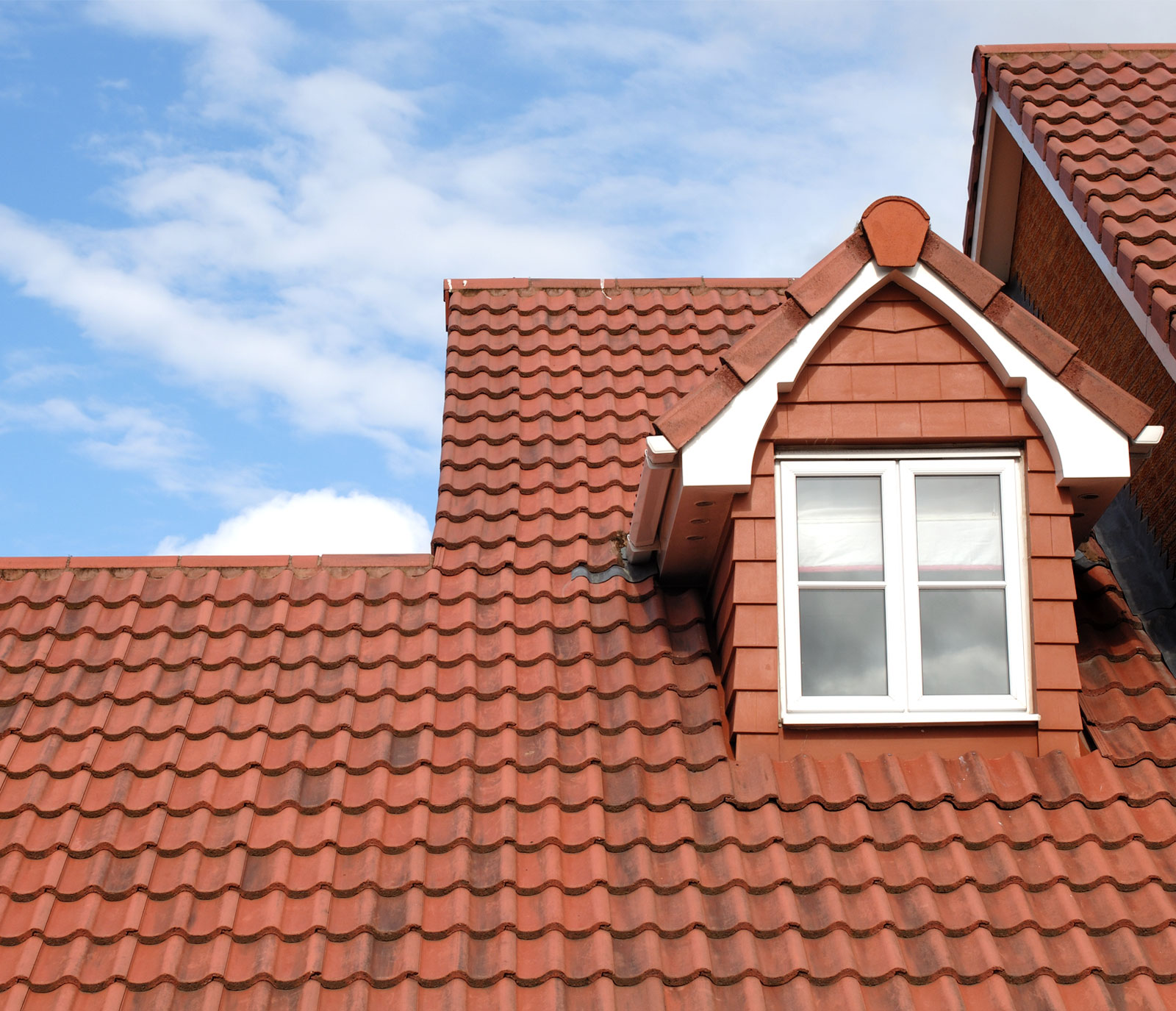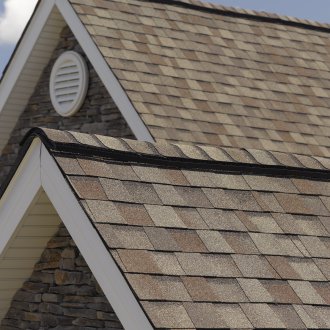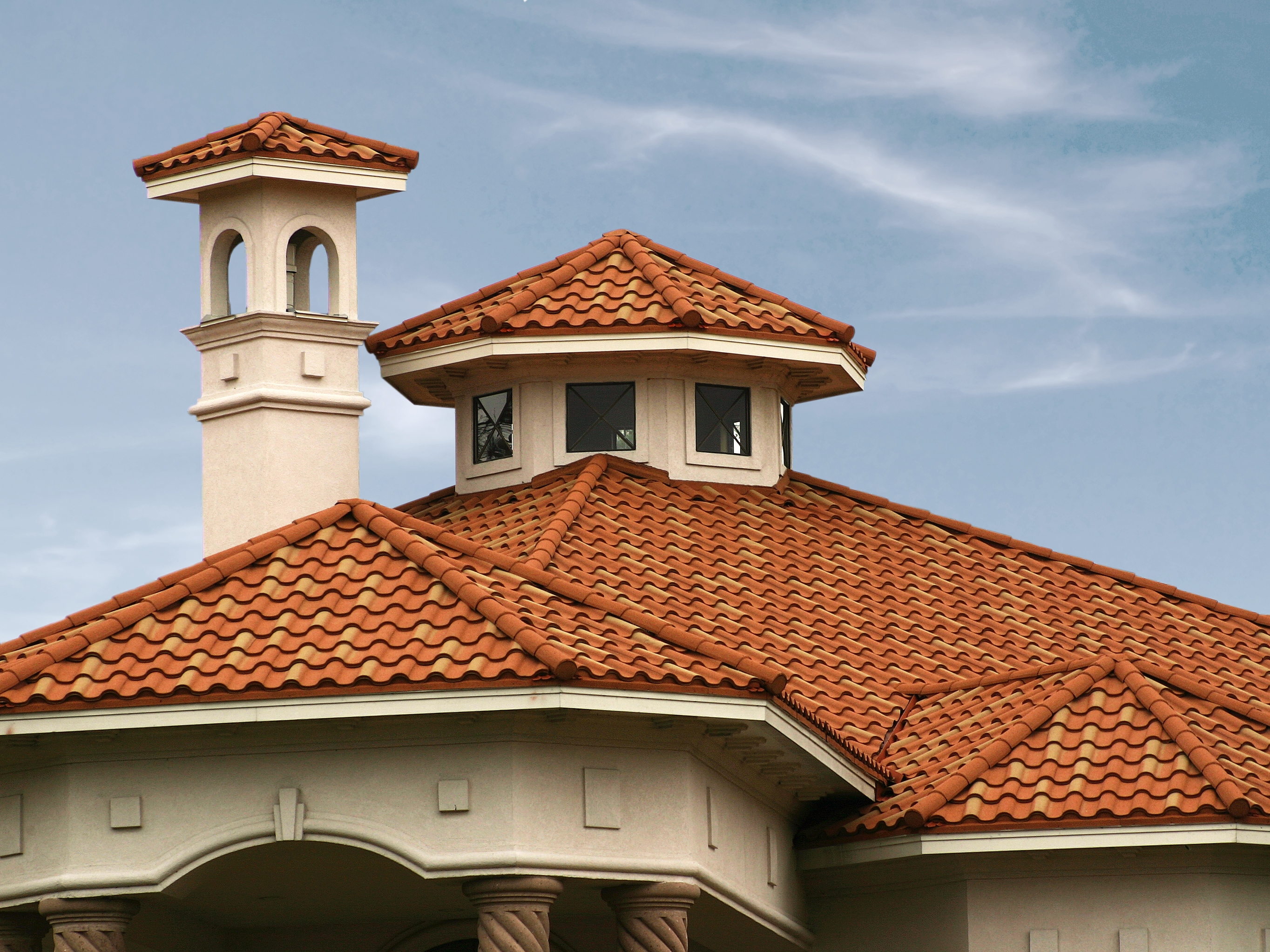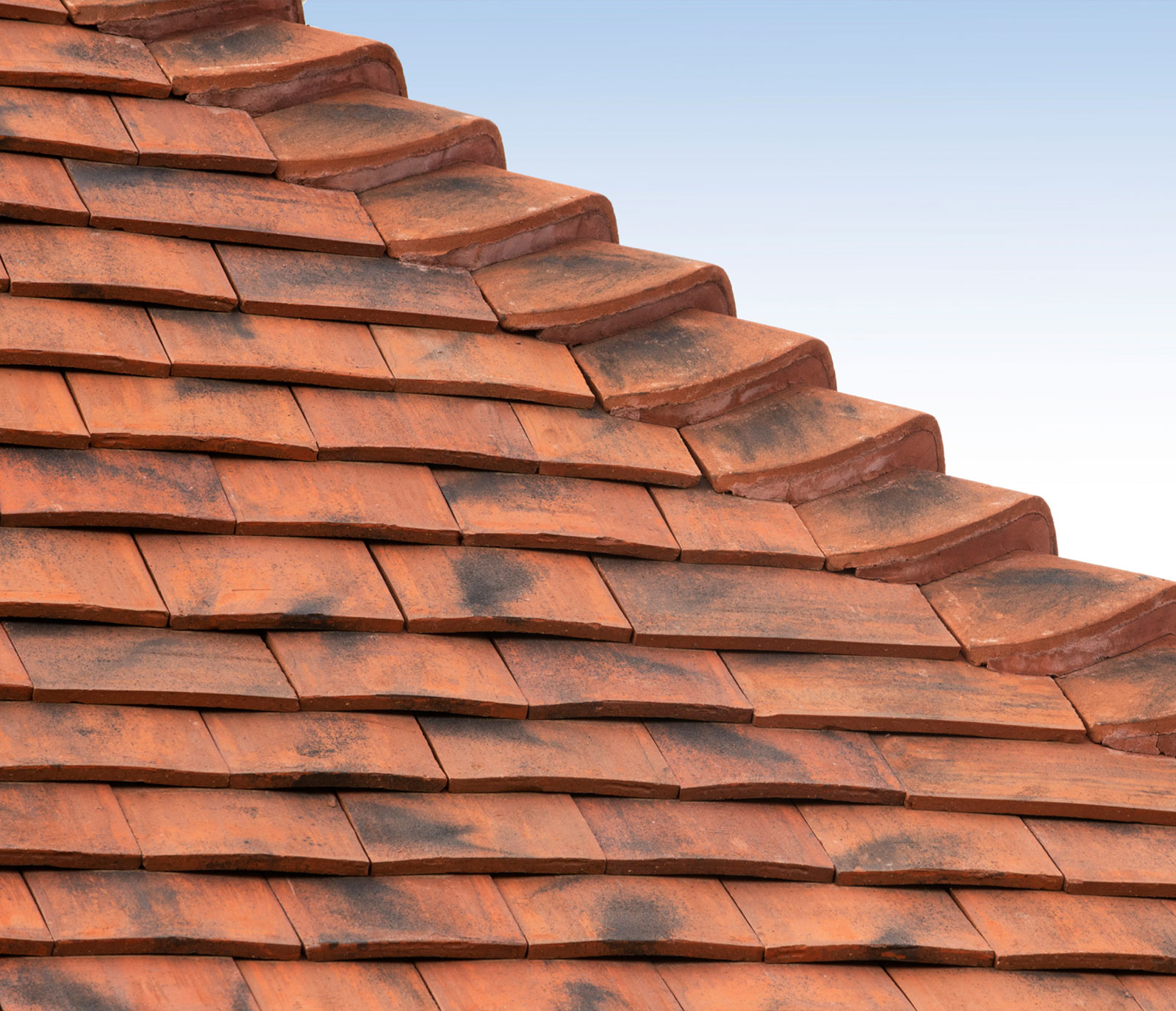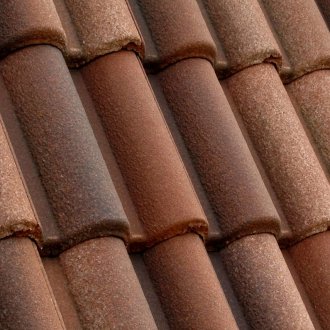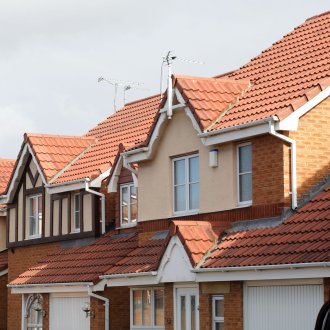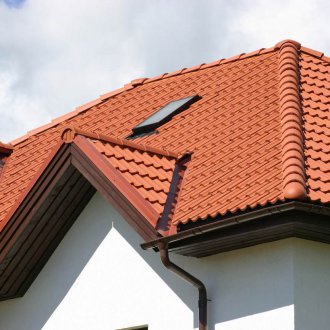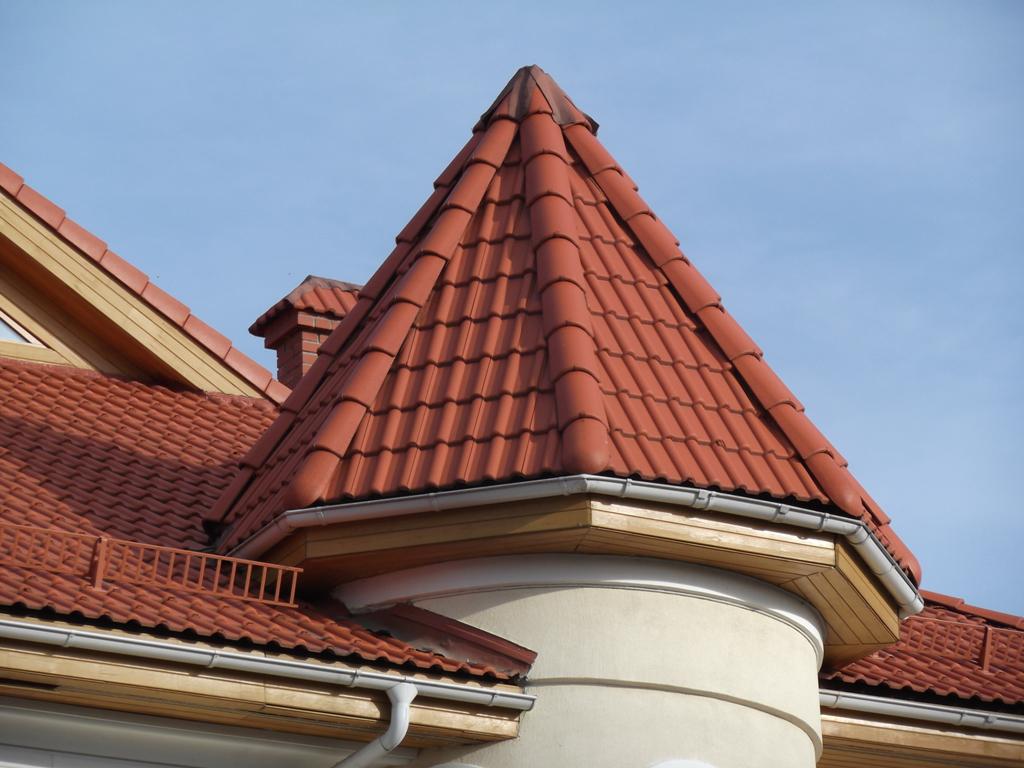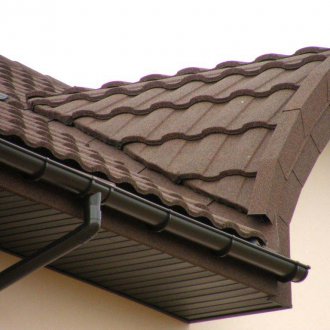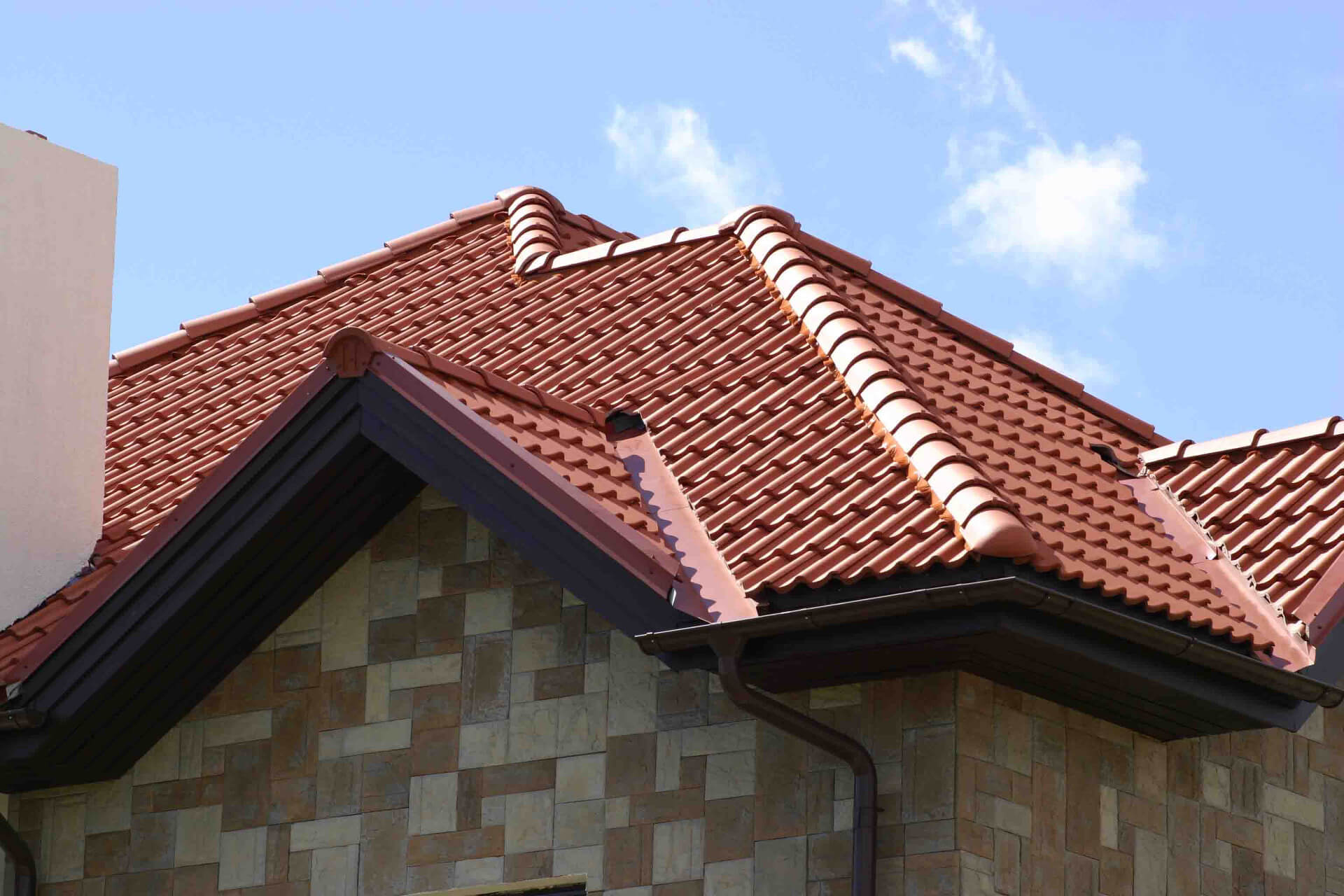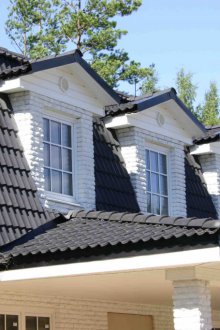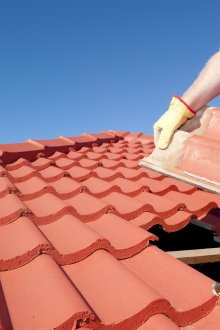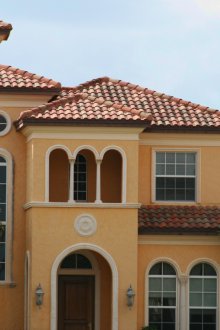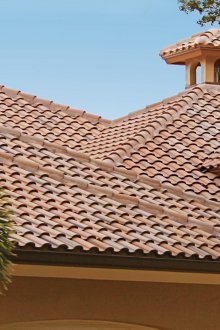Sand tiles: properties, advantages and rules of choice (22 photos)
Content
Sand tiles have been used for roofing relatively recently. Compared to ceramic tiles or metal tiles, it has a more affordable cost. It is durable, frost-resistant, durable and provides good sound insulation, and a wide selection of colors and shapes makes it an excellent option for the roof of a country house, gazebo, country house or other structures.
Specifications
A roof made of cement-sand tiles is perfect for wooden stone, brick structures or a log house. This type of tile is suitable both for flat roofs, and for arches, turrets. With it, you can lay out various forms.
Features of sand tiles:
- During production, no chemical or toxic substances are used; therefore, the material is safe and environmentally friendly.
- When laying tiles between tiles, additional gaps remain, creating additional ventilation of the space under the roof.
- A roof made of cement-sand tiles retains its appearance for a very long time while observing the installation technology.
- High-quality sand tiles can withstand a load of up to 150 kg.
The main characteristics of this roofing material include:
- smooth surface;
- profile height 3.1 cm;
- overlap 75-108 mm;
- tilt angle from 22 degrees;
- lathing pitch 312-345 mm.
The characteristics of such tiles are practically no different from ceramic tiles.
The following ingredients are used to produce the material:
- water;
- quartz sand;
- cement;
- pigments.
To ensure the high quality of the tile, serious requirements are put forward to its components:
- Brand of cement. For the production of tiles, it is necessary to use cement of a brand of at least 200. In this case, the material must have a high setting speed. In this case, the cement should be fresh and stored in a well-ventilated area.
- Pure water. Water should be very clean and free from unpleasant odors and impurities.
- Quality sand. For production, sand of different fractions is used. However, the size of coarse sand should not exceed 2 mm. If river sand is used for the manufacture, it must first be sieved and dried.
Production of high-quality tiles requires not only the use of the right components, but also strict adherence to production technology.
Production of sand tiles
For the manufacture of tiles, components should be prepared and mixed in special containers. It is necessary to mix cement, sand and water in a ratio of 2: 6: 1. The mixture is placed in preforms, primed and dried. Drying time is 8-12 hours.
For the production of colored tiles, a coloring pigment is added to the mixture. An additional staining step is necessary after shaping the material. In this case, if the tile is damaged during operation or installation, the color damage will not be noticeable. Staining allows the tiles to be matte or glossy. You can also find sand tiles, painted with polymer-acrylic paints, giving the products a wet effect.
At the last stage, manufacturers maintain the tiles for a month in a well-ventilated room or outdoors, which improves the characteristics of the material.
Types of sand tiles
Laying cement-sand tiles includes the use of both main tile tiles and ventilation elements, curtain rods, elements for skates, so these types of tiles should be distinguished:
- basic;
- snow retention;
- scaffold;
- ridge;
- pediment;
- ventilation;
- walk-through for communication;
- half.
To obtain a beautiful roof with good performance, each type of tile should be used when installing the roof.
Separately, one can distinguish elements with different structures:
- The main castle. It can be single, double and triple. They allow to increase the strength of the roof, and prevent the ingress of snow and other precipitation.
- Side locks. Needed to connect the elements and protect against the flow of water under the tiles.
- The edges of the tiles. They are distinguished by a rounded shape, which allows water to flow freely from the roof.
- Reinforcing ribs. Increase the ability of the material to withstand mechanical damage.
- Hooks. They are used during the installation of tiles for attaching to a wooden crate. Allows you to distribute the weight of the structure, snow and water evenly. In addition, the feature of the element allows you to protect the wooden crate from moisture and decay.
For optimal results, tile installation should be carried out by experienced roofers using all the main elements of the sand tiles.
Advantages and disadvantages
CHPC is a high-quality roofing material based on cement, water, quartz sand and natural dyes. Such tiles are produced under high pressure and dried at low temperatures.
The main advantages of sand and cement tiles:
- Ecological purity of the material. No toxic and hazardous components are used for production.
- Durability. The service life without loss of external and operational qualities is more than 100 years. At the same time, the manufacturer gives a guarantee of 30 years.
- Presentable appearance. Polymer sand tiles do not look different from ceramic products.
- Frost resistance. Such a roof tolerates temperature extremes and severe frost.
- Ventilation. It guarantees good ventilation of the roof, which prevents the formation of mold, fungus and decay of floor beams.
- Affordable cost. Polymer-sand tiles are much cheaper than ceramic, but at the same time they are not inferior to it in terms of characteristics.
- Resistance to corrosion and decay. The composition does not include components that can rot or rust, so the tile lasts a long time, even despite the constant exposure to moisture and temperature changes;
- Excellent insulating properties. Sand tiles have good thermal and sound insulation characteristics.
- Resistance to aggressive environments. The material has good resistance to impurities in precipitation, ultraviolet and other aggressive environments.
- Shape stability. The material has excellent bending and tearing strength and retains its shape for a long time.
- Fire resistance. The tile has low flammability and resistance to the accumulation of static voltage, therefore, it has a good fire safety index.
Despite the obvious advantages of using sand tiles, this material also has disadvantages. The main disadvantage is the large weight. It is lower than that of ceramic tiles, but sufficient to create a significant load on the rafter system. Other shortcomings should be highlighted:
- A modest palette of colors. Most often, manufacturers offer tiles only gray, red, brown, black and green.
- A small variety of forms. For ceramic tiles, this figure is much higher.
- The complexity of transportation. Due to the high weight and the likelihood of mechanical damage, transporting tiles can be difficult.
Thus, when installing high-quality sand tiles, its advantages exceed small disadvantages.
Features of choice
Correct installation of sand tiles can only be done with the purchase of quality materials, so it is important to give preference to reliable manufacturers. They are distinguished by the availability of service, technical advice and a guarantee of at least 30 years. However, not only the warranty period is important, but also the cases in which this warranty is valid. For example, does the warranty apply to tiles, if you lay it yourself.
Many manufacturers offer the manufacture of tiles for a particular roof. In this case, you can choose the color, shape and other features of the material. The standard tile has a width of 33 cm, which must be taken into account when checking its value.
High-quality tile has a smooth and even surface. The individual elements should fit snugly together. Any distortions are not allowed. When tapped, the tile should make a clear sound. It will not be superfluous to check the quality certificates for products.
Sand tiles - inexpensive and high-quality material for the roof. It is characterized by strength, durability, excellent noise and heat insulation properties. A presentable appearance, subject to installation rules, is maintained for more than 100 years.
